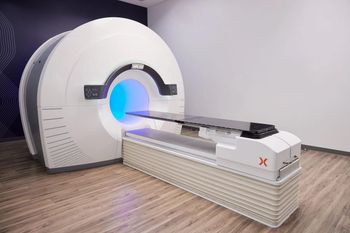FDA Clears New Radiography/Fluoroscopy Systems from Siemens Healthineers
Offering ergonomic controls and AI-enabled features, the remote-controlled Luminos Q.namix R system and the Luminos Q.namix T platform with tableside control reportedly facilitate workflow efficiencies for complex radiography and fluoroscopy examinations.
The Food and Drug Administration (FDA) has granted 510(k) clearance for the Luminos Q.namix R and Luminos Q.namix T radiography/fluoroscopy systems that may enhance efficiency and reduce radiation exposure for specialized and complex examinations.
Offering the option of control room operation, the
Offering a combination of ergonomic features, AI-powered workflow guidance and multiple touch panels that emphasizes ease of use, Siemens Healthineers said the Luminos Q.namix T platform facilitates workflow efficiency for non-ambulatory patients as well as bariatric, pediatric and gastroenterology exams that require more intensive patient interaction.
“With these two new platforms, Siemens Healthineers offers the radiography and fluoroscopy communities a long-sought, user-friendly alternative to imaging systems of unnecessarily complex design, which have been a barrier to more efficient workflows,” noted Niral Patel, the head of X-ray products at Siemens Healthineers North America.
Newsletter
Stay at the forefront of radiology with the Diagnostic Imaging newsletter, delivering the latest news, clinical insights, and imaging advancements for today’s radiologists.





























